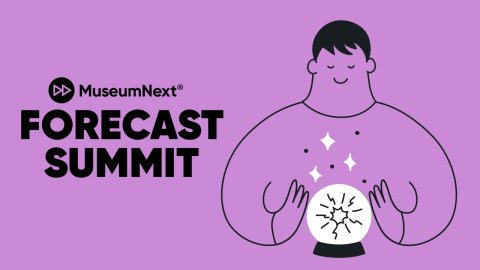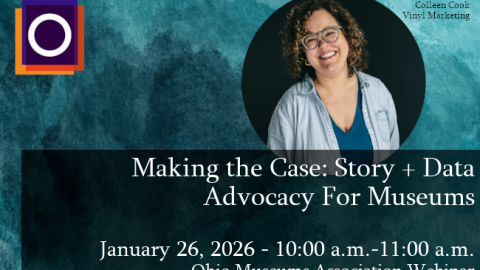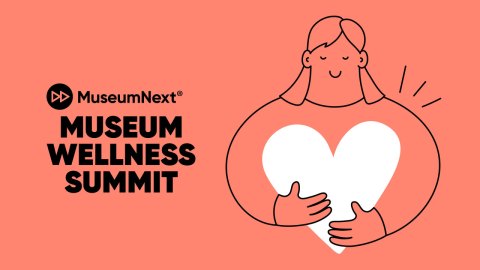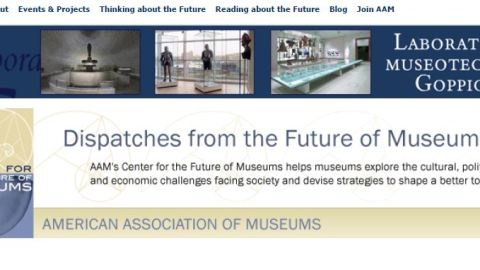
Greetings! This is my second blog as Aroha Fellow for Museums and Creative Aging, and I begin by reiterating my invitation to meet colleagues who share an interest in creative aging during the 2019 AAM Annual Meeting in New Orleans this month, May 19-22. In the future there will be more formal sessions and speakers, but as AAM gets started in this work, one-on-one meetings will be a helpful way to begin. Specifically, I would be interested in talking with colleagues who are already engaged in effective creative aging programs for active older adults, or who have ideas for potential topics and speakers for the convening at the High Museum in Atlanta we are planning in 2020, or who are developing a program for a regional meeting and would like support in addressing the topic of creative aging. There is much to share—email me at wtramposch@aam-us.org and we can arrange a time and place to meet in New Orleans.
As we explore the potential for creative aging in museums, let’s think a moment about context. We Americans live in a culture that celebrates newness and youth. It always has—even Alexis de Tocqueville, writing about shipbuilding in the early nineteenth century, observed that Americans make things, wear them out, and simply make more things anew. With such a deep-seated national mindset, is it any wonder that as we grow older we so naturally absorb expressions like “over the hill” or “the autumn of our lives?” After all, let’s remember that many of us grew up “never trusting anyone over thirty.” Traditionally, at a certain age one is expected to step aside, retire, get out of the way, and coast. No such assumptions could be more opposed to the spirit and intent of creative aging!
Ageism is all around us. Why is that? With age comes perspective and, I dare say, more patience derived from having tried many things before and from seeing what has worked and what hasn’t. With age, however, there can also come rigidity, and if one is not careful, real hesitation to put oneself “out there” and possibly fail. The tonic for this is learning, lifelong learning, be that in a pottery studio or on a travel adventure, in an art gallery or in a dance class.
Museums must take into account the needs (and the opportunities) inherent in maturing populations. Are there enough comfortable seats in our galleries? (Probably not.) Is our label font large enough? (Likely, no.) Are our interpreters speaking loudly enough to be heard by all? (What did you say?)
Ageism, be it implicit or explicit, leads to exclusion and a real loss of opportunity. Future blogs, publications, and panels will explore how we in museums can increase our sensitivity to the needs of elders in ways that engage and transform.
It is essential that we focus on this topic now, for the demographics regarding aging are attention-getting. According to the Summit on Creativity and Aging convened in 2015:
- Ten thousand people a day turn 65 in America
- The fastest growing age group in the United States is women over 85
- A child born today has a high probability of living until 100
- Life expectancy in the US has increased from 45 in 1900 to 79 in 2000
We at AAM begin our work on the shoulders of some impressive efforts already taken. For example, The Summit on Creativity and Aging in America, a convening hosted by the National Endowment for the Arts and the National Center for Creative Aging, developed the following recommendations in 2015:
- To work to eliminate ageism across all federal policies
- To seek ways to provide more federal funding for interdisciplinary research and collaborations
- To develop more federal incentives for the private sector
- To encourage more public and private leadership
These facts and resolutions provide compelling reason (if we need any) for our field to turn its undivided attention to the needs and potentials of engaging older audiences and to become more sensitive and responsive to ageism in America.
In pursuit of that goal, I am planning a number of helpful blogs over the next two years, blogs that will focus on matters like:
- Examples of what some museums are already doing to engage creative agers
- The health benefits of creative aging
- Creative aging initiatives abroad
- The power of bringing youth and age together in museum programming
- Reading lists on the topic of creative aging
- Funding opportunities for creative aging initiatives
- A field guide to ageism
- Federal policy and ageism
- Marketing creative aging programs
This is a working list, so if you have any suggestions for topics you would like addressed, or if you would like to share some of your own institution’s successes in creative aging ventures, please let me know over email or in the comments.
Bill Tramposch
Aroha Fellow for Museums and Creative Aging
Mendocino, California







